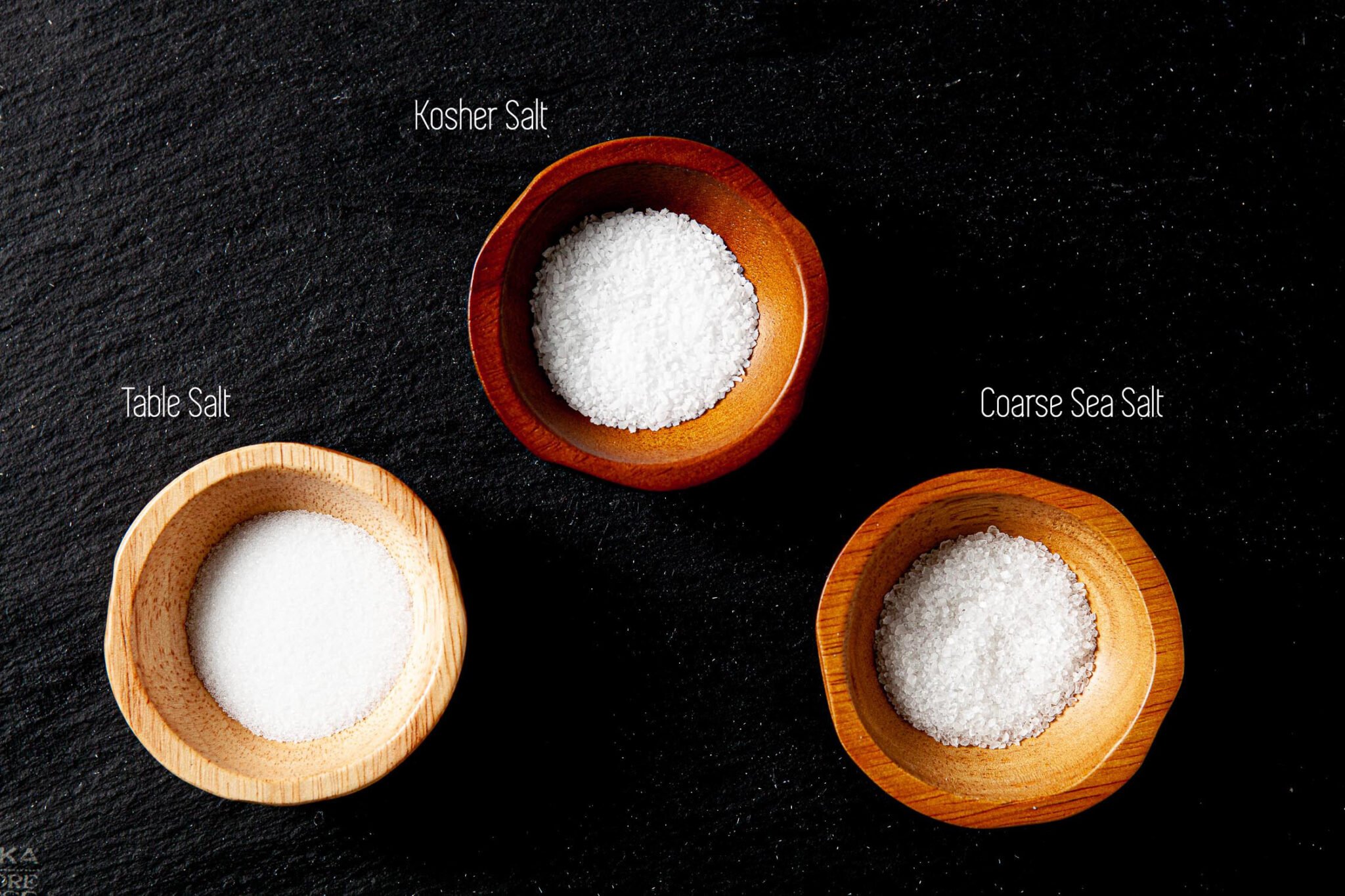Salt Spreaders For Pickup Trucks: Your Comprehensive Guide to Winter Preparedness pickup.truckstrend.com
As winter approaches and temperatures plummet, the challenge of maintaining safe and accessible properties becomes paramount. For businesses, municipalities, and even diligent homeowners with larger driveways, managing ice and snow is not just about convenience; it’s a critical safety imperative. This is where salt spreaders for pickup trucks emerge as indispensable tools. These powerful attachments transform an ordinary pickup into a highly efficient snow and ice management machine, capable of dispensing salt, sand, or other de-icing agents quickly and effectively over large areas. Far beyond manual shoveling or small push spreaders, pickup truck salt spreaders offer unparalleled efficiency, coverage, and control, making them a cornerstone of modern winter maintenance strategies.
Types of Salt Spreaders for Pickup Trucks
Salt Spreaders For Pickup Trucks: Your Comprehensive Guide to Winter Preparedness
Choosing the right salt spreader for your pickup truck begins with understanding the various types available, each designed to meet different needs and operational scales.
1. Tailgate Spreaders
- Description: These are typically smaller, more compact units that attach to the receiver hitch or tailgate of a pickup truck. They often feature an electric motor powered by the vehicle’s 12V system.
- Capacity: Ranging from 50 lbs to 200 lbs, ideal for smaller jobs.
- Best For: Residential driveways, small commercial lots, sidewalks, and light-duty applications where maneuverability and quick setup are key.
- Materials: Primarily granular salt, ice melt pellets, or a salt/sand mix.
- Pros: Affordable, easy to install and remove, compact storage, good for tight spaces.
- Cons: Limited capacity, slower coverage for large areas, may block tailgate access.

2. Hopper Spreaders (In-Bed)
- Description: These larger units sit directly in the bed of the pickup truck. They feature a hopper (container) for material, an auger or conveyor system to move material to a spinner, and a motor (electric, gas, or hydraulic) to power the system.
- Capacity: Varies significantly, from 250 lbs to over 2,000 lbs, depending on the model.
- Best For: Medium to large commercial properties, apartment complexes, small municipalities, and anyone needing higher capacity and more consistent spreading.
- Materials: Can handle a wider range, including rock salt, treated salt, sand, and gravel.
- Construction: Available in durable poly (plastic) for corrosion resistance or stainless steel for maximum strength and longevity.
- Pros: High capacity, excellent coverage, more consistent spreading, better weight distribution than tailgate models.
- Cons: More expensive, requires more robust vehicle payload capacity, heavier to install and remove, takes up bed space.


3. V-Box Spreaders
- Description: The largest and most heavy-duty type of in-bed spreader, characterized by their "V" shaped hopper design, which helps material flow efficiently. They are designed for professional and municipal use.
- Capacity: Often exceeding 2,000 lbs, up to several tons.
- Best For: Large-scale commercial operations, road maintenance, large parking lots, and environments requiring continuous, high-volume spreading.
- Materials: Capable of handling virtually any de-icing material, including wet materials like brine-pretreated salt.
- Power: Typically gas or hydraulic powered for maximum torque and reliability.
- Pros: Massive capacity, superior material flow, extremely durable, built for continuous heavy use.
- Cons: Most expensive, requires heavy-duty pickup trucks (often 3/4-ton or 1-ton), very heavy, complex installation.
Key Benefits of Using a Pickup Truck Salt Spreader
Investing in a salt spreader for your pickup truck offers a multitude of advantages that go beyond simply getting the job done.
- Efficiency and Speed: Manual spreading is tedious and time-consuming. A pickup truck spreader can cover vast areas in a fraction of the time, allowing you to manage multiple properties or larger areas quickly, which is crucial during severe weather events.
- Cost-Effectiveness: While there’s an initial investment, the long-term savings in labor costs, reduced material waste, and minimized liability from slip-and-fall accidents far outweigh the upfront expense. You can purchase bulk materials, which are significantly cheaper.
- Enhanced Safety: By quickly and effectively de-icing surfaces, you significantly reduce the risk of slips, falls, and vehicle accidents for employees, customers, and the public. This also protects your business from potential liability claims.
- Versatility: Many spreaders can handle various materials – from different types of salt to sand, ice melt, and even fertilizer in the off-season – making them useful year-round.
- Professional Appearance: Using a dedicated spreader projects a professional image, demonstrating to clients and the public that you are well-equipped and serious about safety and property maintenance.
- Reduced Physical Strain: Eliminates the back-breaking work of manually spreading de-icing agents, protecting your team from injury and fatigue.
Choosing the Right Salt Spreader for Your Pickup
Selecting the ideal spreader requires careful consideration of several factors to ensure compatibility, efficiency, and longevity.
- Vehicle Compatibility (Payload Capacity & Bed Size): This is paramount. Every pickup truck has a maximum payload capacity (found in your owner’s manual or on a sticker inside the door jamb). Ensure the spreader’s weight (empty and full of material) does not exceed this limit. Also, measure your truck bed to ensure the chosen spreader will fit.
- Spreading Needs (Area Size, Frequency, Material Type):
- Small Residential/Light Commercial: A tailgate spreader or smaller poly hopper (250-500 lbs) is likely sufficient.
- Medium Commercial/Multiple Properties: A larger poly or stainless steel hopper (500-1500 lbs) will offer better efficiency.
- Large Commercial/Municipal/Roads: A V-box spreader is the only practical choice for continuous, heavy-duty use.
- Consider the type of material you’ll primarily use. Some spreaders are better suited for specific materials (e.g., a V-box for wet sand/salt mixes).
- Power Source:
- Electric (12V DC): Common for tailgate and smaller hopper spreaders. Easy to connect to the truck’s battery.
- Gas Engine: Offers independent power, high torque, and reliability, common for larger hopper and V-box units.
- Hydraulic: Used on the largest V-box spreaders, requiring a truck with a hydraulic system (often PTO-driven).
- Material Capacity: Match the spreader’s capacity to the size of the areas you need to treat and how often you want to reload. Larger capacity means fewer stops.
- Durability and Construction:
- Polyethylene (Poly): Lightweight, corrosion-resistant, and generally more affordable. Excellent for salt.
- Stainless Steel: Extremely durable, long-lasting, and highly resistant to corrosion, but heavier and more expensive. Ideal for heavy use and abrasive materials.
- Control Options: Look for intuitive, in-cab controls that allow you to adjust spread width, material flow, and sometimes even a vibrator for clumping materials. Some advanced models offer wireless controls.
- Budget: Spreader prices vary widely. Determine your budget but remember that quality and durability often correlate with price, leading to better long-term value.
Installation and Operation Guide
Proper installation and operation are key to maximizing your spreader’s performance and lifespan.
Installation:
- Read the Manual: Always start by thoroughly reading the manufacturer’s instructions.
- Vehicle Preparation: Ensure your truck’s electrical system is in good condition, especially the battery and alternator for electric spreaders. Consider adding a heavier-duty electrical connection if recommended.
- Mounting:
- Tailgate Spreaders: Mount directly into the receiver hitch. Secure with a hitch pin.
- In-Bed Spreaders: Carefully lift the spreader into the truck bed (often requires a forklift or multiple people). Secure it using tie-down straps or bolts through pre-drilled holes in the bed, if applicable. Ensure weight is distributed evenly.
- Wiring and Controls:
- Electric Spreaders: Route the power cable from the spreader to the truck’s battery, often through the cab for in-cab controls. Use appropriate gauge wire and fuse protection.
- Gas/Hydraulic Spreaders: Follow specific instructions for fuel line connection or hydraulic hose routing.
- Install the in-cab control unit in an easily accessible location.
Operation:
- Load Material Safely: Never overload the spreader beyond its rated capacity or your truck’s payload limit. Distribute material evenly.
- Pre-Operational Checks: Before driving, check that all connections are secure, the spinner is clear, and the auger/conveyor moves freely.
- Calibration: This is crucial for efficient and effective spreading.
- Determine Spread Pattern: Test the spreader in a clear area to observe the width and uniformity of the material distribution.
- Adjust Flow Rate: Use the in-cab controls to adjust how much material is dispensed. Start with a low setting and increase as needed.
- Vehicle Speed: Maintain a consistent, slow speed (typically 5-15 mph) for even coverage. Higher speeds can cause material to spread too widely or unevenly.
- Spreading Technique: Drive in a systematic pattern (e.g., overlapping passes) to ensure full coverage without over-applying. Be mindful of wind, which can affect spread patterns.
- Safety First: Always operate with caution. Be aware of your surroundings, especially overhead obstacles and pedestrians. Never operate the spreader with anyone standing near the spinner.
Maintenance and Storage Tips
Proper maintenance is critical for extending the life of your salt spreader and ensuring it performs reliably season after season.
- Thorough Cleaning After Each Use: Salt is highly corrosive. After every use, especially when done for the day, empty any remaining material. Rinse the entire spreader thoroughly with fresh water, paying close attention to the hopper, auger, spinner, and all moving parts. A pressure washer can be very effective.
- Lubrication: Regularly lubricate all moving parts, such as bearings, chains, and hinges, with a good quality water-resistant grease or lubricant.
- Electrical Connections: Inspect all wiring, connections, and the control unit for corrosion, fraying, or damage. Apply dielectric grease to electrical connections to prevent moisture ingress.
- Inspect for Wear and Tear: Check the spinner, auger, and other components for signs of wear, cracks, or damage. Replace worn parts promptly.
- Off-Season Storage:
- Perform a final, very thorough cleaning and lubrication.
- Store the spreader in a dry, covered area (garage, shed) to protect it from the elements.
- If possible, remove the spreader from the truck to reduce strain on your vehicle and prevent unnecessary exposure to road salt during the off-season.
- For gas-powered units, drain the fuel or use a fuel stabilizer before storage.
Potential Challenges and Solutions
While highly effective, salt spreaders can present some challenges. Knowing how to address them can save time and frustration.
- Challenge: Material Clogging/Bridging: Salt or sand can clump, especially if damp, leading to uneven flow or complete blockage.
- Solution: Use dry, free-flowing material. Many hopper spreaders include an agitator or vibrator kit; ensure it’s working properly. Break up large clumps before loading.
- Challenge: Electrical Issues: Spreader not turning on, inconsistent power, or blown fuses.
- Solution: Check all wiring for loose connections, corrosion, or damage. Ensure your truck’s battery is fully charged and the alternator is functioning. Always use the correct fuse size.
- Challenge: Uneven Spreading Pattern: Material is concentrated in one area or distributed inconsistently.
- Solution: Calibrate the spreader correctly for your desired spread width and material type. Maintain a consistent vehicle speed. Check the spinner for obstructions or damage. Adjust the deflector shields if available.
- Challenge: Rust and Corrosion: Especially with steel components, exposure to salt leads to rust.
- Solution: Thorough and immediate cleaning after each use is paramount. Apply anti-corrosion sprays or coatings to exposed metal parts. Consider poly hoppers for maximum corrosion resistance.
- Challenge: Overloading Vehicle/Spreader: Exceeding payload capacity can damage your truck and the spreader.
- Solution: Always know your truck’s payload capacity and the spreader’s maximum material capacity. Use a scale if unsure. Fill only to the recommended levels.
Estimated Price Guide for Salt Spreaders For Pickup Trucks
Prices for salt spreaders vary significantly based on type, capacity, features, brand, and material. The table below provides estimated price ranges to give you an idea, but actual prices will fluctuate.
| Spreader Type | Capacity Range (Approx.) | Power Source | Typical Features | Estimated Price Range (USD) |
|---|---|---|---|---|
| Tailgate Spreader | 50 – 200 lbs | 12V Electric | Poly hopper, adjustable spinner speed, wired remote control | $400 – $1,500 |
| Hopper Spreader (Poly) | 250 – 1,000 lbs | 12V Electric | Poly hopper, vibrator, adjustable flow gate, in-cab controller | $1,500 – $4,000 |
| Hopper Spreader (Stainless Steel) | 500 – 2,000 lbs | 12V Electric | Stainless steel hopper, auger feed, vibrator, advanced in-cab controls | $3,000 – $8,000 |
| V-Box Spreader | 1,000 lbs – 4+ tons | Gas or Hydraulic | Stainless steel or poly, heavy-duty auger/chain, liquid pre-wetting options, robust controls | $5,000 – $20,000+ |
Note: These prices are estimates and can vary significantly based on brand, specific features, dealer, and region. Installation costs, accessories (e.g., pre-wetting kits, light kits), and shipping are typically additional.
Frequently Asked Questions (FAQ)
Q1: How much salt can a pickup truck spreader hold?
A1: It varies greatly by type. Tailgate spreaders typically hold 50-200 lbs. Hopper spreaders (in-bed) can range from 250 lbs to over 2,000 lbs, while large V-box spreaders can hold several tons.
Q2: What kind of material can I put in my salt spreader?
A2: Most spreaders handle granular materials like rock salt, treated salt (e.g., calcium chloride, magnesium chloride blends), and ice melt pellets. Many also handle sand. Larger V-box units can handle wet sand, gravel, and even pre-wetted salt. Always check your spreader’s manual for compatible materials.
Q3: Do I need a special hitch for a tailgate spreader?
A3: Most tailgate spreaders attach to a standard 2-inch receiver hitch. Ensure your hitch is rated for the spreader’s weight when full.
Q4: How fast should I drive when spreading salt?
A4: A consistent, slow speed is crucial for even coverage, typically between 5 to 15 miles per hour. Driving too fast can cause material to spread too widely or unevenly, and too slow might over-apply.
Q5: Can I install a salt spreader myself?
A5: Many tailgate spreaders and smaller electric hopper spreaders can be installed by a mechanically inclined individual following the manufacturer’s instructions. However, larger, heavier units, or those requiring complex electrical or hydraulic connections, might benefit from professional installation to ensure safety and proper operation.
Q6: How do I prevent my salt spreader from rusting?
A6: The best defense against rust is thorough cleaning after every use with fresh water. Consider a poly (plastic) hopper for maximum corrosion resistance. For steel components, regularly apply anti-corrosion sprays or waxes, and inspect for and touch up any paint chips or scratches. Store the spreader in a dry, covered area when not in use.
Q7: Is a vibrator kit necessary for a salt spreader?
A7: A vibrator kit is highly recommended, especially when using materials prone to clumping or bridging (like damp salt or sand). It helps ensure a consistent flow of material to the auger or spinner, preventing clogs and uneven spreading.
Conclusion
Salt spreaders for pickup trucks are more than just winter accessories; they are essential investments for safety, efficiency, and property management during the colder months. From the compact convenience of a tailgate spreader for residential use to the robust capacity of a V-box unit for commercial operations, there’s a solution tailored for every need. By understanding the types available, considering your specific requirements, and committing to proper installation, operation, and maintenance, you can transform your pickup truck into a powerful asset, ensuring safe and clear surfaces all winter long. Choosing the right spreader is not just about moving salt; it’s about preparedness, professionalism, and peace of mind.


